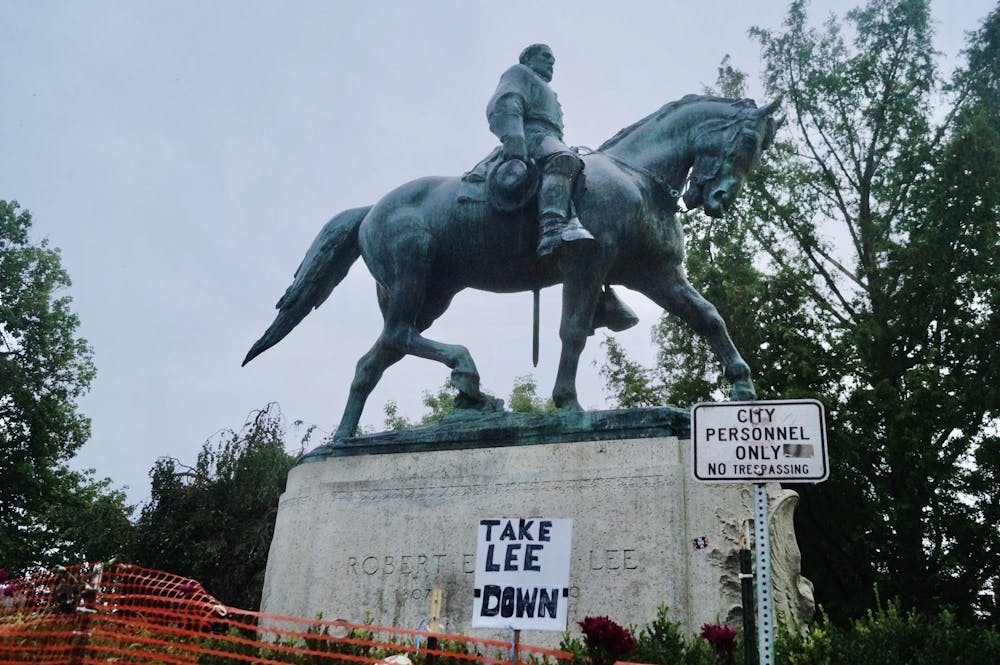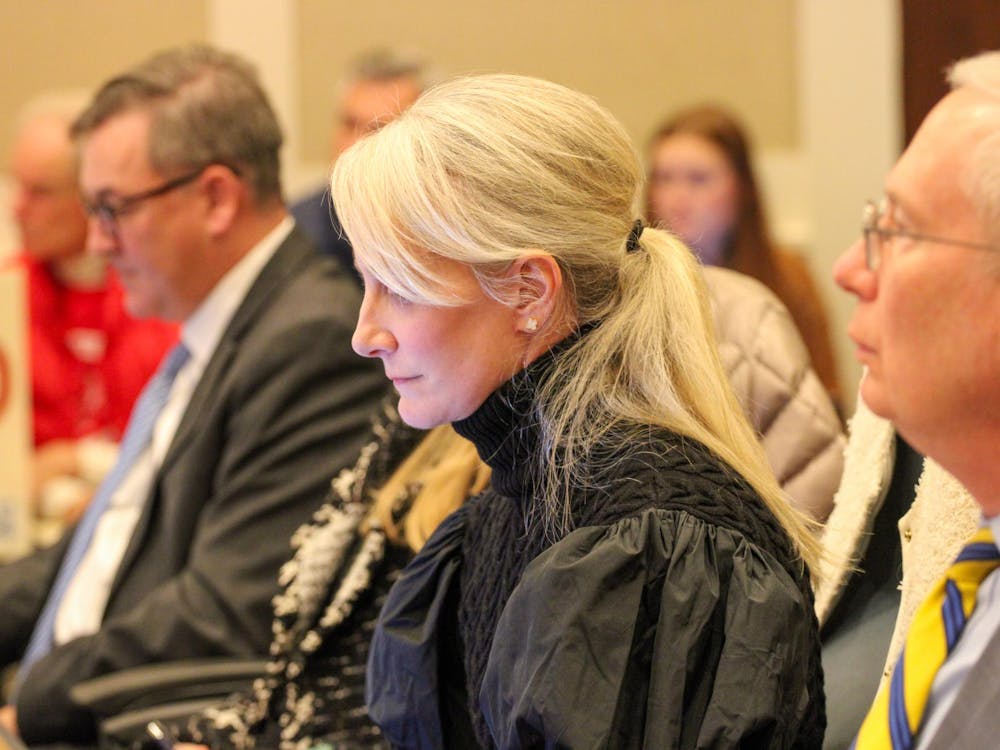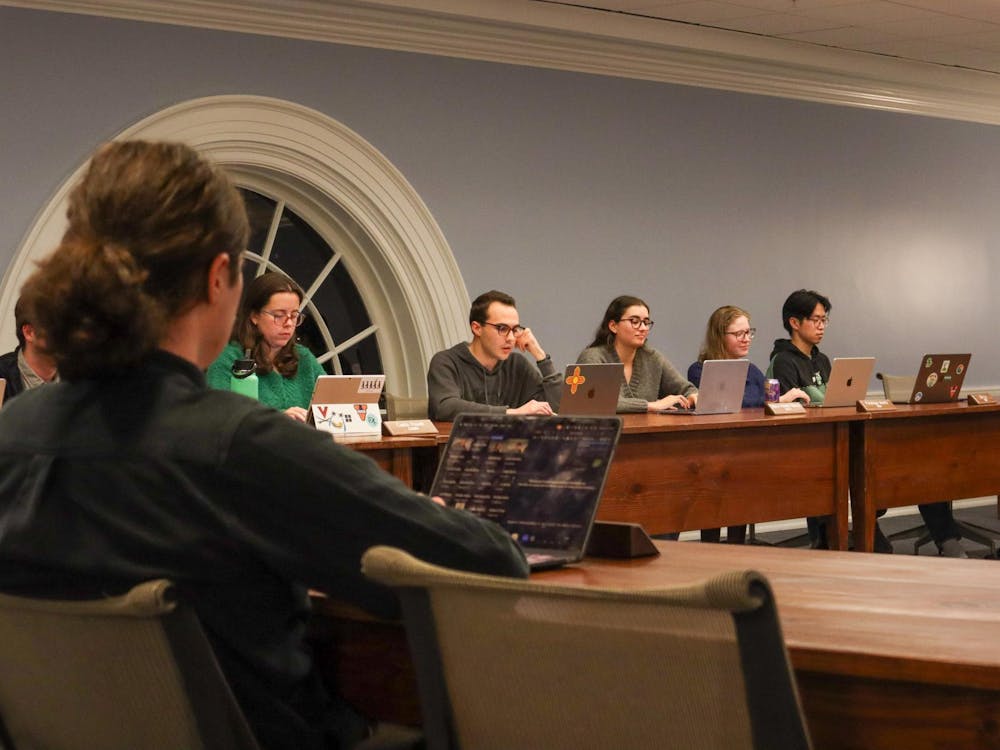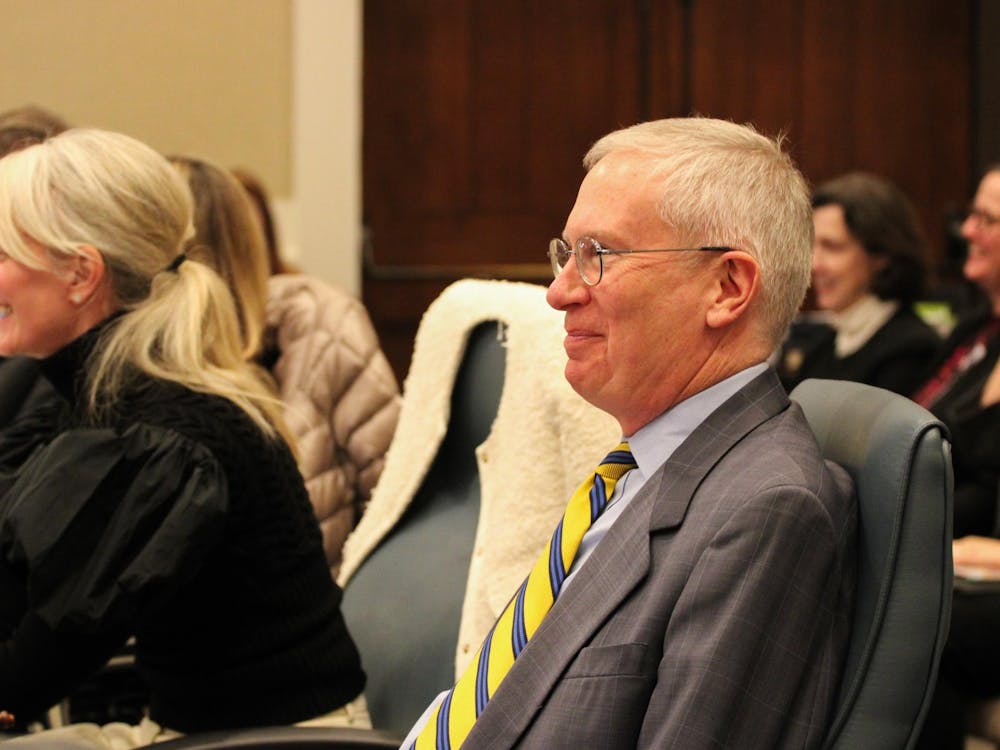Roughly 70 people attended a screening in the McIntire Amphitheater of the short documentary “Unveiling: The Origins of Charlottesville's Monuments” Saturday evening, which details the history of the Confederate monuments in the city, most of which were erected between 1909 and 1924.
The film was produced by The Memory Project and currently available for online viewing at VPM. It combines archival materials with the historical knowledge and personal experiences of five Black residents of Charlottesville to tell the story of the monuments’ installations. For Jalane Schmidt, director of The Memory Project and assistant professor of religious studies, the goal of the film was to “to promote more democratic narratives about the past and our collective past.”
Schmidt was one of the five Black community members featured in the film, along with fourth-year College student Zyahna Bryant, whose petition as a high school student kicked off a conversation within the City about the role of monuments to Confederate veterans, DeTesea Gathers, co-chair of Descendants of Enslaved Communities at U.Va., Dr. Andrea Douglas, director of the Jefferson School African American Heritage Center, and Dr. Wes Bellamy, former vice mayor of Charlottesville.
The film recounts the impact of Reconstruction in Charlottesville — a period after the Civil War of expanded political rights and economic mobility for Black Americans — and that the installation of the statues in Charlottesville were part of a broader backlash by white Southerners who sought to preserve the racial hierarchy of the Antebellum Period by venerating the Confederacy.
Reconstruction was also a period when Black citizens were increasingly pushing for educational opportunity, becoming property and business owners and holding elected office for the first time.
In an interview with The Cavalier Daily following the showing, Schmidt said the idea for the film came out of the work of the City Council’s Blue Ribbon Commision of Race, Memorials and Public Spaces, and she hopes it will serve as an educational tool about the historical context of Confederate monuments. 11 members were appointed to the Commission in 2016, which worked to address concerns about the statues, which Schmidt says catalyzed a change in the way people began to think about the statues.
“The conventional narrative before six years ago, it was [these are] statues of heroic people, and they should be where they are and they're beautiful,” Schmidt said. “This is an intervention because it's Black people clapping back. It's saying these narratives were there all along and why that's important.”
Schmidt also spoke to the current litigation regarding the melting down of the Robert E. Lee statue. The Trevilian Station Battlefield Foundation and the Ratcliffe Foundation are suing the City of Charlottesville — which is in possession of the statue — arguing that the City lacks the right to destroy Confederate monuments under state law. The City argues the Lee statue is no longer a public monument because the City transferred legal ownership to JSAAHC to repurpose the monument.
“You can't find an art museum, a history museum and we went around, Smithsonian, everywhere, high and low — nobody wants them,” Schmidt said. “The only people who do want them are going to put them to very bad use, where they would have the same meanings as they stood for 100 years in our parks.”
The Lee statue was also one of the flashpoints in the events of Aug. 11 and 12, 2017, when a rally of white supremacists protested the removal of Confederate statues. The statue of Robert E. Lee in Lee Park — now known as Market Street Park — was installed in 1924. On Aug. 11, protesters marched down the Lawn brandishing torches and chanting homophobic and anti-semetic slurs. This event was followed by the “Unite the Right” rally Aug. 12 where a man ultimately drove his car into a crowd of counter-protesters the next day, killing Heather Heyer and injuring others.
“It is not just simply about statues, but it is a way we're also constructing the ideology of whiteness,” Douglas said in the documentary. “That ideology also includes, just like any other ideology, includes ritual and includes pageantry and includes public demonstration of the rightness and goodness of all of that space as well.”
In the film, Schmidt says that “part of what happened around these statues is a kind of broadcasting of the values of the former Confederacy and of the new white supremacist Jim Crow regime.”
The role of the University community also came up in the documentary, especially highlighting a speech that then-University president Edwin Alderman gave at the 1921 installation of the Stonewall Jackson statue when he referred to Jackson as a “soldier-saint” and espoused eugenicist ideas.
The film details the origin of the statues and points out that the multi-day-ceremonies that accompanied the installation of similar statues often coincided with neo-Confederate reunions in the City, as well as an uptick in activity by the Klu Klux Klan.
In 1921, the local chapter of the KKK held its inaugural cross burning at Monticello. This period was one of more widespread acceptance of the KKK which had somewhere between four and six million members and reached its most visible manifestation when an estimated 40,000 KKK members marched in Washington, D.C.
Charlottesville resident Deanna McDonald attended the screening and said she learned more about “the depth of complicity that the University holds in this whole racial injustice and inequity conversation.”
“Being an educational institution, you’d think that it's forward thinking, but to really learn that it is steeped in the history of this oppression is kind of mind-boggling,” McDonald said.
After the screening, a panel discussion was held between Schmidt, Gathers and John Edwin Mason, assistant professor of history and co-director of the Holsinger Portrait Project. Mason connected the razing or gentrification of historically Black neighborhoods in Charlottesville — like Vinegar Hill, Gospel Hill and McKee Row — with current housing and labor issues that are affecting Black Charlottesville residents today. He said most Black people employed at the University did so not on the faculty, but as staff earning “just above minimum wage” and poor benefits, requiring them to work multiple jobs and likening it to a “plantation.”
“We have gotten rid of the symbols of white supremacy, but not the reality,” Mason said. “Symbolically, it was an important moment, but the struggle against white supremacy continues.”







